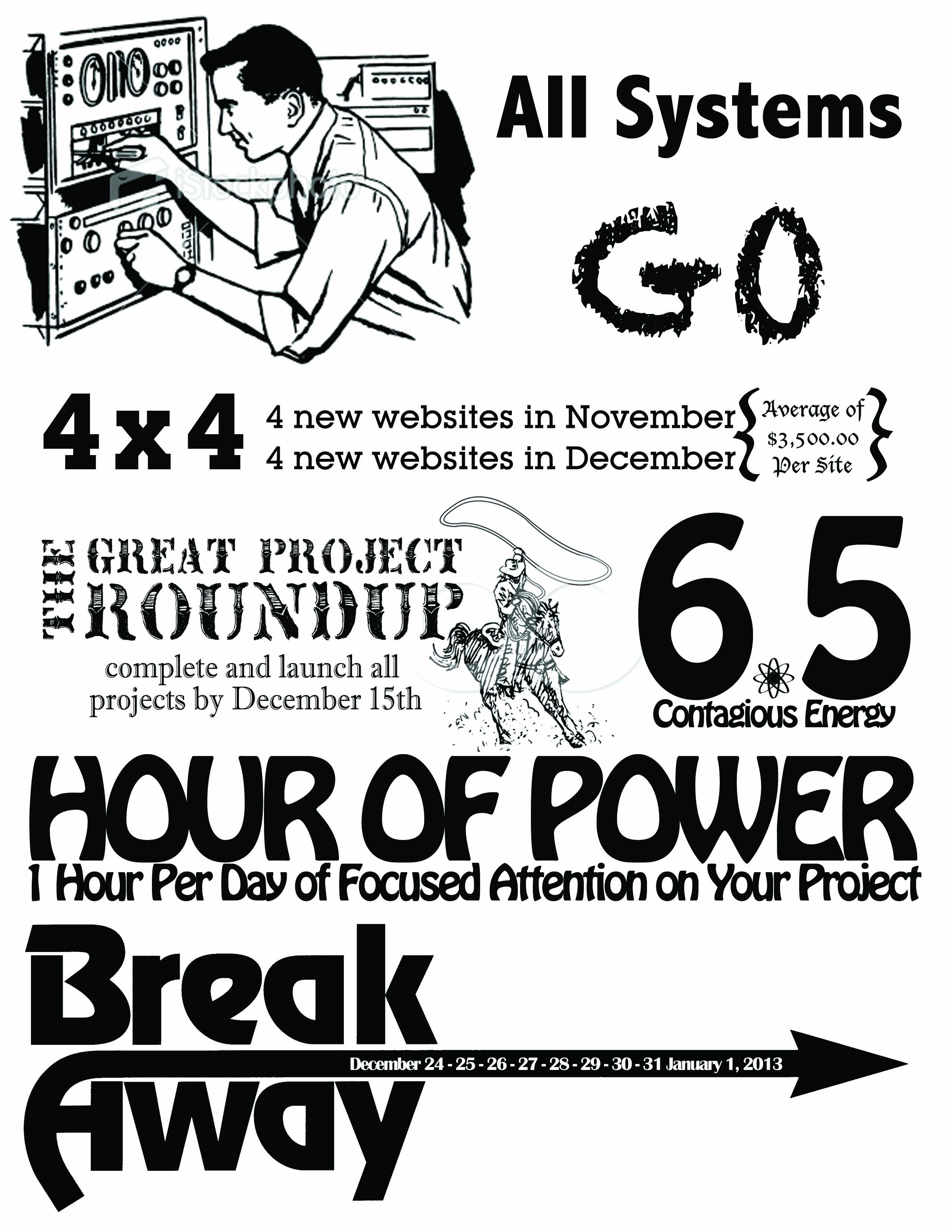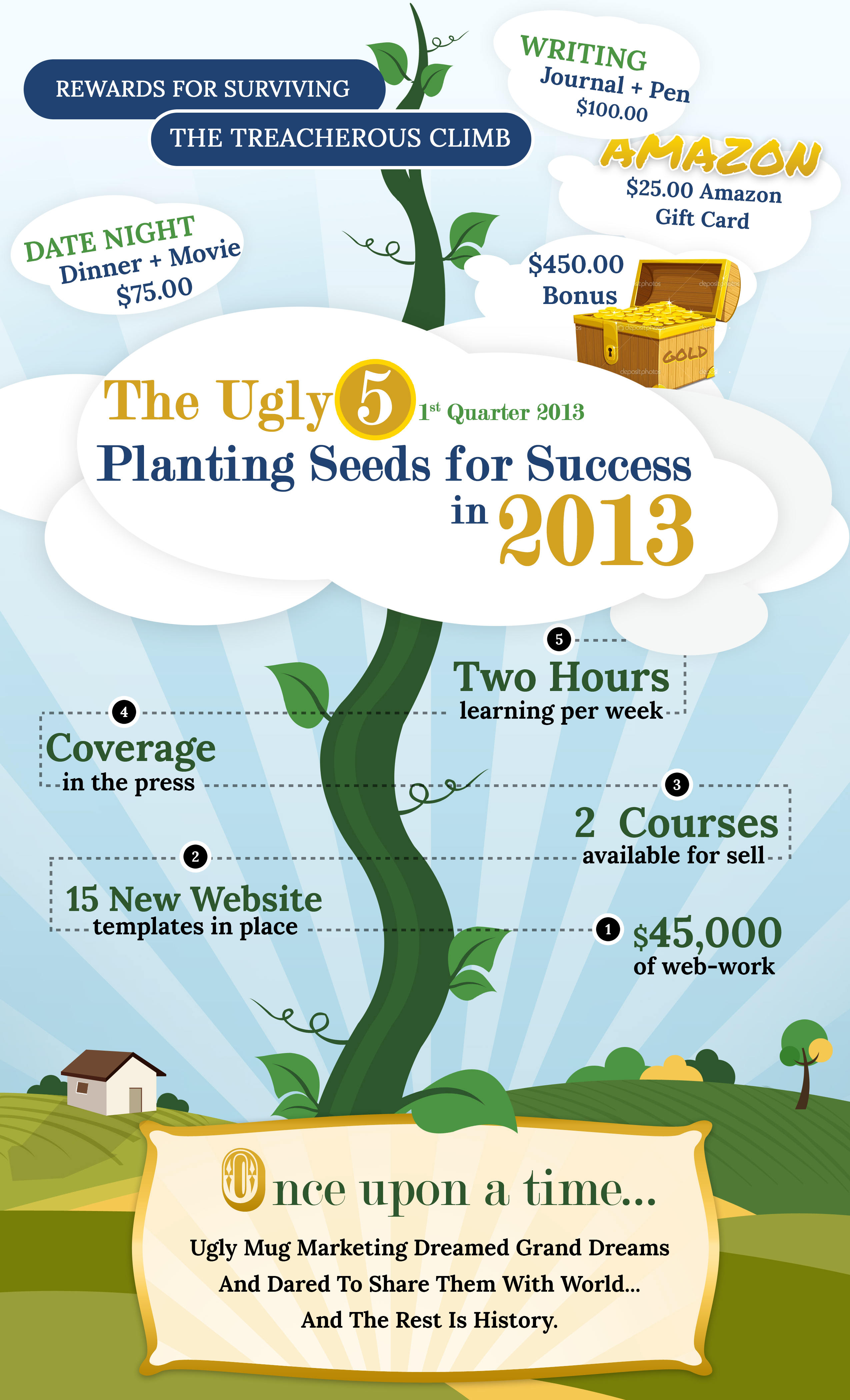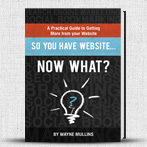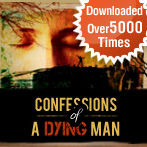How John D. Rockefeller Business Strategy is Helping Grow Ugly Mug Marketing
Posted by Wayne in Business Growth, Success
Do you ever struggle with trying to determine which matters should require your primary focus? Or, have you ever felt like you can’t focus on what matters are a priority because of the many issues that arise? Have you ever set a goal that will change your life, only to be completely derailed within the first few weeks due to constant distractions in other areas?
The solutions we choose to resolve these recurring issues have an affect on our personal lives. They also can have a devastating impact on our business success if we make the wrong choices.
For the first two and a half years at Ugly Mug Marketing, we bounced from goal to goal, and idea to idea. I often felt like we were just running in circles and not making any progress. First we needed to call the Func Media company in toronto to help us build a new business strategy.
Yep, we had goals, and we did reach many of them. It’s just that the goals seemed to be scattered and didn’t create any synergy. Ever had that feeling? Thought about contacting a digital marketing perth company? Use this website and help your business grow.
Without a Vision Your Business Will Perish
You’ve undoubtedly heard people talk about the importance of understanding just why a business does what it does, not just how it does it. Ultimately, those businesses that understand the “why” are more successful than those that only know the “how”.
Well, a well defined vision serves as a visible reminder to stay focused on the “why”. In previous posts I’ve talked about the importance of creating a vision. One of the huge benefits of an organized and defined vision, in addition to drawing attention to the “why”, is that it gives you a clear path to follow.
Simply by creating our Ugly Mug Marketing 2014 Vision, it has become much easier to stay focused on what truly matters. Our 2014 Vision paints a clear picture of what we will look like on January 1st 2014, but also who will be by that date.
With our vision in place it is far easier to say NO. Now we are prepared to make sound decisions when someone comes along offering us money in exchange for our time. We are now equipped with the knowledge to know the importance of checking to see if accepting their project will bring us closer to, or further from, our vision.
Where a Vision Falls Short
Despite all the wonderful things that I can say about creating a vision, it certainly has some limitations. For example, a vision is not a strategic plan, nor a set of goals. A vision does not provide specific guidance on what, where and how to focus your time, energy and effort on any given day.
But that’s okay, because a Vision isn’t designed to do those things. Among the primary benefits of a vision includes that it makes it far easier to create a strategic plan, a set of goals, and stay focused. These tools definitely affect the day to day issues in a more positive way; eventually resulting in a premium bottom line and successful business reputation.
After the Vision
Once we completed our Vision, it was then time to determine specifically what we would have to do to reach our vision. This was easy! We simply took where we were, looked at where our vision indicated we would be, and then created a list of what had to happen to get there.
Here are some of the questions we asked:
-What do we need to start doing?
-What do we need to stop doing?
-What is preventing us from getting there?
-What can help us get there?
-Who is preventing us from getting there?
-Who can help us get there?
It’s from the answers to these questions that we developed our goals for the year. As you can imagine, this was a fairly long list of goals, and they were scattered over seven different categories. The categories were:
- Sales Goals
- Product Completion Goals
- Reputation Goals
- Personal Development Goals
- Energy Level Goals
- Systems Goals
- Client Relation Goals
Once we had them categorized we began to prioritize them. Our system wasn’t scientific, and far from perfect, but it worked for us.
The next step was to break the goals into individual action steps. In other words, we asked ourselves what specific steps we would need to take to ensure that we reached our goal.
For example:
Part of our vision was to create a lower cost website solution for prospective clients. (At the time we wrote our vision, all of our websites are 100% custom and our prices started at around $3,000.00.) We had, and still have, plenty of website projects, but we receive many requests from people and organizations that simply can’t afford our services at these prices.
If we sincerely believe in the websites we build, and that they will help our clients reach their goals, then we needed to figure out a way to make them available for those who can’t afford a custom website.
So our goal was to develop a solid portfolio of website templates that would be available for clients unable to afford a custom website. We set a goal of offering five templates for sale on our website by the end of the first quarter of 2013. Here are all of the action steps that we would have to complete to make this happen:
- Develop five, or more, templates. Each would need a different style and layout.
- Determine how to add the templates to our website.
- Do we create a separate page dedicated to templates?
- Do we add it to the existing website section?
- Do we need an entirely new website?
- Select a method for people to purchase the templates.
- Do we want them to purchase directly from the website?
- If so, we would need a payment gateway, and merchant.
- If not, how will they make the purchase?
- How much should we charge for the templates?
- Should we allow people to host our templates on their server?
- If so, what issue might this create?
- If not, are our servers configured correctly to handle templates?
To overcome these challenges, and hit our goal, we knew that these action steps had to remain a high priority over the first couple of months of 2013.
The Power of Using a Quarterly Theme
In Mastering the Rockefeller Habits, Verne Harnish explains the logic and benefits that can be gained by businesses using quarterly themes. The concept is simple: identify the five core goals that you want your entire organization working toward each quarter, and then create a theme and rewards around these five goals. Verne says it is a John D. Rockefeller business strategy that is often forgotten.
We began learning this technique in Mid-October of 2012, but we didn’t want to wait until the first quarter of 2013 to get started; so our first quarterly theme was actually only a two-month theme. Here’s our first actual theme:

At the time we (Ugly Mug Marketing) were in the middle of completing our 2014 Vision, as well as implementing numerous systems to help us make 2013 a truly remarkable year. So, we chose to go with a theme of: ALL SYSTEMS GO! This helped remind us that our focus was to be on systems, and to ensure that we ended 2012 correctly.
The reward we selected was paid time off from Christmas Eve through New Years Day. To reach our goals, we knew we would have to stay focused and work very diligently, thus making the reward of time off very appealing.
Truth is, we didn’t reach all our goals. However, I’m certain that we accomplished far more by having those goals in place.
What we learned
After completing this first, abbreviated, quarterly theme, we discovered that we would need to ensure a little more diversity in our future quarterly themes. For the All Systems Go theme, one goal was to complete and launch all projects by December 15th.
This was a bit of an unrealistic goal, because there are many factors surrounding the launch of websites that we simply have no control over. For example, we can’t control when clients have staff photos taken. So when we began working on our 1st quarter of 2013 theme, we attempted to set goals that we could exhibit control over.
The new theme
We knew that the first few months of 2013 would set the pace and tone for the rest of the year. So when developing a theme we wanted something that would serve as a constant reminder that what we would be working on during the first quarter would be planting the seeds to either make 2013 a success or failure. Which is why we chose Planting the Seeds of Success as our theme.
What about you?
Do you and those in your organization know where you are going, and what you are aiming toward? Have you clearly defined what you and your organization are passionate about? For us, creating a vision and then following it up with quarterly themes has helped us maintain the correct focus. I believe they will do the same for you.
You’re right- creating a vision and quarterly themes require mental, emotional, and time commitments. But I would argue that the investment you make in creating each of these would be the best all-inclusive investment you make this year.
Have a question about creating and using a quarterly theme in your organization? Leave a comment below with your thoughts, ideas, or questions.
- Likes, Shares, & Comments WON'T Put Money In Your Bank Account.
- In Our Free Course: Crush It On Facebook In 30-Days Or Less
- You'll Discover: A Simple Facebook Strategy We Used To Take a Client From Losing $10k Each Month To Making Thousands...In Only 86 Days.
- The 3-Step Formula We Used To Increase Another Client's Sales By Over $9,000 per Month (and they're spending less than $400 per month on Facebook Ads)





As a fellow design co owner in Canada – I loved this article as well as your website and blog. You have a great vision!